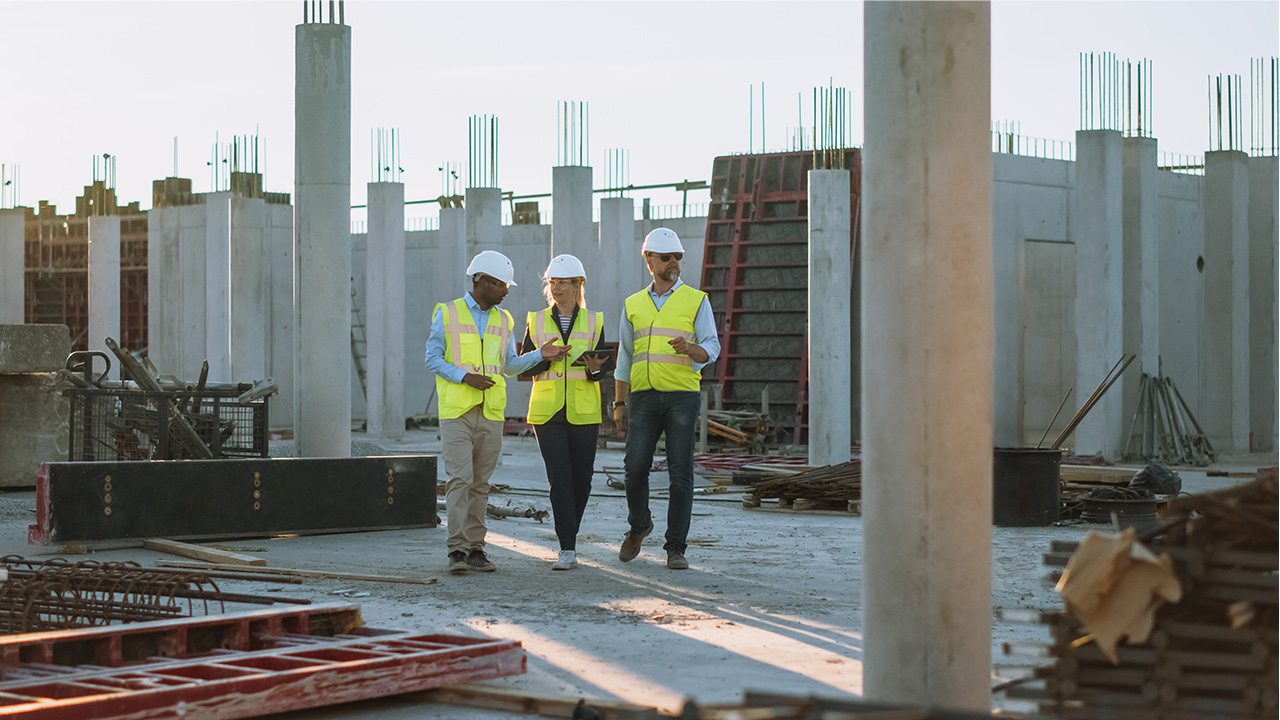Understanding the Real Estate Development Process
Learning about real estate development processes prepares you to become a confident investor. Before you can be successful in the world of real estate, it’s essential to fully comprehend each of the phases of real estate development. Throughout the pre-development, construction, and operational phases, property development goes through distinct stages that are essential for any investor to understand.
Real estate development isn’t for the faint of heart, but it can be an achievable, extremely lucrative way to diversify and grow your portfolio, if you know what you're doing.
Learning the various stages of real estate development can help you achieve your dreams of owning residential or commercial properties that balance out your portfolio and offer you passive income streams to build future wealth and security.
What Is Real Estate Development?
Real estate developments involve both residential and commercial structures. So, when you plan to build, modify, or improve a piece of real estate, you might decide to get into real estate development.
The timeline includes three main stages that take you from an idea for a project to constructing a finished building or improving an existing structure.
Phases of Real Estate Development
The stages of real estate development involve a pre-development stage, where you deal with things such as permits, environmental assessments, and zoning issues, among other steps.
During the construction stage, you will often work on things like construction, marketing, and solidifying financing.
In the final stage, you concentrate on operations – including finding a buyer, determining whether to hold or sell a property, and making other critical decisions.
Keep reading to learn more about each real estate development phase.
Phase 1: Pre-Development
In phase one of the real estate development process, you or your team will conduct a lot of market analysis regarding a property and its income potential. There are many factors to consider, including real estate fees, local zoning laws, and any surveys needed to justify the planned use.
In addition, you'll have to hire architects and other professionals to develop site plans, secure permits, and possibly complete environmental assessments.
The initial phase is one of the riskiest stages of developing real estate. You’ll need considerable funds to get started, but there's no guarantee on how much you'll make. Often, pre-development is funded by seed money or angel investors.
Phase 2: Construction
Those who want to know how to get into real estate developments should pay special attention to the construction phase. Here, you’ll take down draws on approved financing, but each phase requires meeting certain milestones prior to receiving more money.
During the construction phase, you’ll complete vertical construction of your building plans, work on maintaining or expanding your construction financing, and focus on pre-leasing commercial or residential structures.
It's important to arrange for any financing not solidified during pre-development and to find a property manager. In commercial or residential real estate development, this middle stage often involves making improvements to a property.
At the end of the process, you'll receive a certificate of occupancy that indicates you can begin operations. It's crucial that everything goes as planned during the construction phase of development real estate.
Phase 3: Operation
The post-development stage (operations) includes finding a buyer or tenants, marketing, and ongoing property management. You also need to determine whether you’ll hold the property long-term or sell it for a profit.
Achieving stabilization gives you more options and decreases your risk at this final stage of the process. You may need to find or draw on short-term bridge loans to complete the project, allowing you to reach stabilization.
Wondering what “stabilization” actually means? It indicates you have met a predefined occupancy level, commonly 90% or better, for at least three months. This leads to long-term stability so you can meet your financial obligations and turn over a profit on the project.
A great deal often depends on how much pre-leasing you’re able to accomplish in the construction phase. The more tenants you secure, the lower your risk during operations.
Closing Thoughts
Knowing different stages of real estate development can help you have greater confidence when working your way through them.
Starting with preconstruction, it's all about finding the right property to move forward with your plans.
During the construction phase, you'll need to secure enough funding to complete each stage of development.
Finally, once you reach operations, you'll need to stabilize your financing so you can make measured decisions about whether you will hold or sell the property you’ve worked so hard on to complete.
If you’re hoping to learn more about how to get into real estate development, working with the right team can help you meet your real estate development goals. By successfully completing each stage, you’ll offer your investors the confidence they need that you'll be able to meet your obligations.
Interested in learning more about how to invest in real estate? Check out Connect Invest’s blog to get valuable insight and information about all-things real estate. We’re changing the world of investing, opening doors for the everyday real investor who wants to get in on some real estate action. With Connect Invest, you’ll have access to commercial real estate investment opportunities you may not have thought were possible.
Sign up today to find out how you can invest in lucrative, short term, low-initial cost real estate investments that offer high yield passive income.

